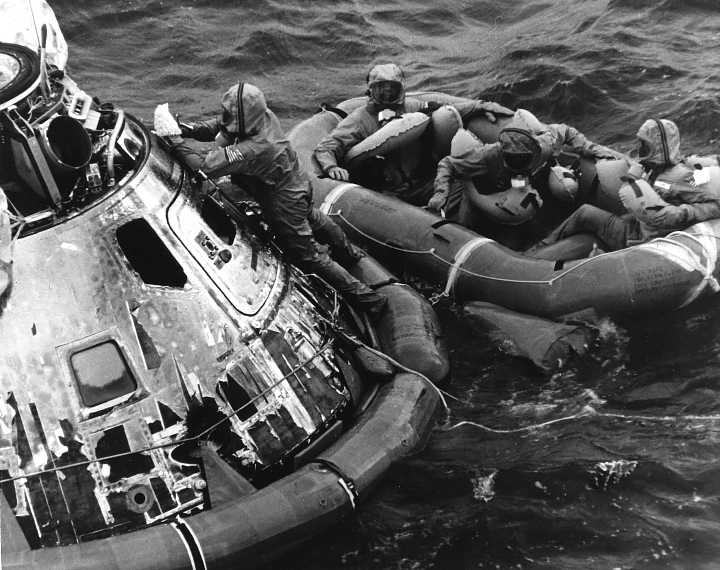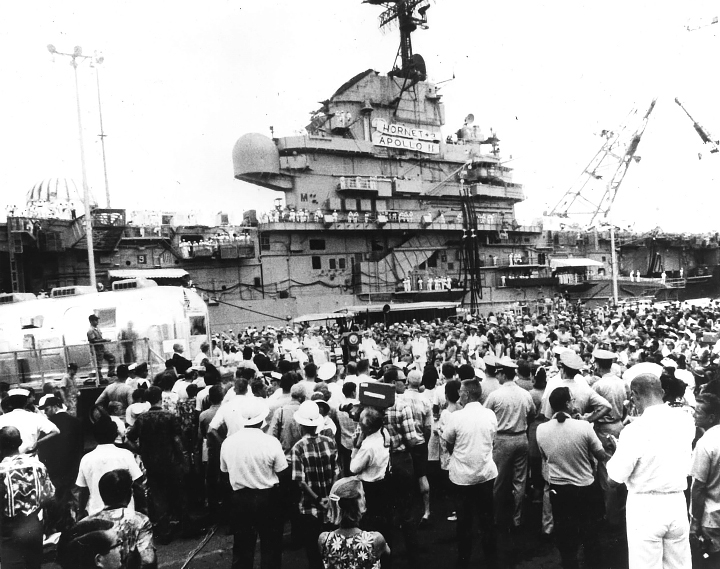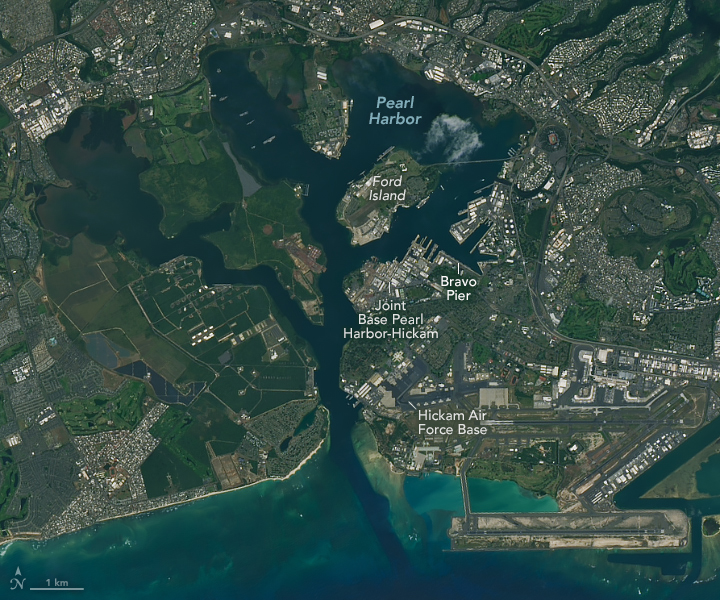On July 24, 1969, three men began their plunge back to Earth, cradled inside a conical spacecraft that had just days earlier orbited the Moon. As the Command Module Columbia entered Earth’s atmosphere at 24,000 miles (39,000 kilometers) per hour, the spacecraft briefly turned into a fireball complete with a glowing tail of ionized plasma that streamed behind the craft as the surrounding air heated to more than 5,000 degrees Fahrenheit.
About 9 minutes into reentry, three orange-and-white parachutes deployed and slowed the module to speeds of around 25 miles per hour before the 12,000-pound craft smacked into the roiling swells of the Pacific Ocean. The first people to plant an American flag on the Moon were safely home—almost.
With the module bobbing in the Pacific about 800 miles southwest of Hawaii, Navy recovery divers arrived at the splashdown site by helicopter, approached the command module by raft, and hand-delivered three green biological isolation garments, or BIGs, to the astronauts through a side hatch.

After the men donned their BIGs and emerged from the capsule, they waited in a raft for helicopter pickup (shown above) and were airlifted to the USS Hornet CV-12, a World War II-era aircraft carrier steaming toward the splashdown site. Upon landing, the astronauts were quickly sequestered in a converted Airstream trailer called a Mobile Quarantine Facility (MQF) designed to prevent biological contamination from potential lunar pathogens. It was in this 280-square-foot space, complete with a bathroom, shower, galley, and bunks, that astronauts would spend the next few days while traveling to a more spacious quarantine facility in Houston, Texas.
However, the astronauts’ first stop would be Pearl Harbor on the island of O‘ahu in Hawaii. On the morning of July 26, the Hornet docked at Pier B25-26 (part of Bravo Pier), about 52 hours after Columbia was hoisted aboard the aircraft carrier, making the journey on the carrier only 6 hours shorter than the trip from lunar orbit to splashdown.

Thousands of cheering well-wishers greeted the vessel (above). The Hornet’s commanding officer, Capt. Carl J. Seiberlich, was joined by Adm. John S. McCain, Commander-in-Chief of Pacific Command; Hawaii Governor John A. Burns; and Honolulu Mayor Frank F. Fasi for a brief welcoming ceremony that included Hawaiian flower leis, ukulele music, and hula dancers.
Soon after, the MQF was offloaded by crane to a waiting flatbed truck and then driven to nearby Hickam Air Force Base, where it was loaded into a C-141 Starlifter bound for Ellington Air Force Base in Houston. “They traveled direct, inside the MQF,” explained Teasel Muir-Harmony, a historian of science and curator of the National Air and Space Museum’s Apollo collection. “In Texas, they were transported inside the MQF to the Lunar Receiving Lab. Their wives greeted them there, wearing red, white, and blue.”
The OLI-2 (Operational Land Imager) on Landsat 9 captured this image of Pearl Harbor on March 20, 2025. Bravo Pier remains an operational wharf used by naval vessels as part of Joint Base Pearl Harbor-Hickam. While Columbia was also taken to Houston for decommissioning, the command module first went to Ford Island, an islet in the center of the harbor, where technicians deactivated pyrotechnic equipment and performed other checks to prepare it for transport. The command module was transferred to the Smithsonian in 1971 following a NASA-sponsored tour of American cities.
NASA Earth Observatory image by Michala Garrison, using Landsat data from the U.S. Geological Survey. Apollo 11 recovery photographs courtesy of Naval History and Heritage Command. Story by Adam Voiland.
